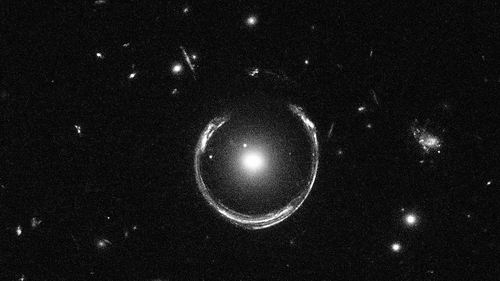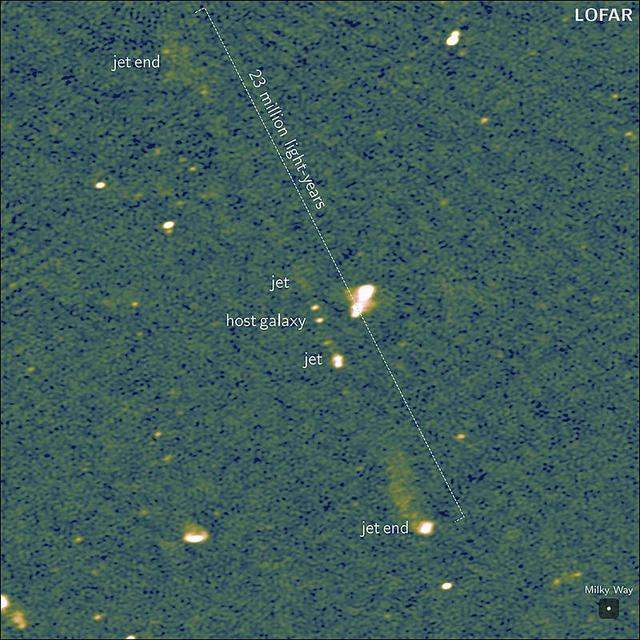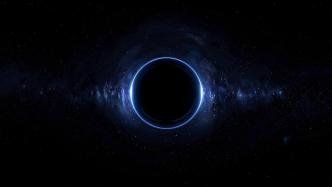
Astronomers may have discovered the largest black hole ever discovered. This cosmic behemoth is nearing the theoretical upper limit of 10,000 times the mass of the black hole at the center of the Milky Way.
The black hole resides in one of the most massive galaxies ever observed, a "cosmic horseshoe." This galaxy is so massive that it warps spacetime, distorting light from a passing galaxy behind it into a giant horseshoe-shaped loop.
A paper published in the Monthly Notices of the Royal Astronomical Society on August 7 showed that this supermassive black hole is equivalent to the mass of 36 billion suns.

A newly discovered supermassive black hole lies at the center of a galaxy. Image credit: NASA/ESA
It is generally believed that every galaxy in the universe has a supermassive black hole at its center, and larger galaxies have even larger black holes, namely supermassive black holes.
"This is one of the top ten most massive black holes ever discovered, and it's very likely the largest," said Professor Thomas Collett of the University of Portsmouth in the UK. "Most black hole mass measurements are indirect and have large uncertainties, making it practically impossible to determine which one is the largest. However, thanks to our new method, we have greater confidence in determining the mass of this black hole."
The researchers detected the "cosmic horseshoe" black hole by combining gravitational lensing with stellar kinematics, a technique that studies the motion of stars within a galaxy and how quickly and how they orbit the black hole.
Collett said that stellar kinematics is considered the "gold standard" for measuring black hole mass, and the gravitational lensing effect can help the team "probe more distant universe."
"We detected the black hole's effects in two ways: by changing the path of light passing through it, and by causing stars in the inner regions of its host galaxy to move extremely fast, at speeds approaching 400 kilometers per second," Collett said. "By combining these two measurements, we can be completely confident that this black hole is real."
Carlos Melo of the Federal University of Rio Grande do Sul in Brazil, who led the study, added: "This discovery is of a 'dormant' black hole, that is, one that is not actively accreting matter. Its detection depends entirely on its enormous gravitational pull and the effect it has on its surroundings."
"What's exciting is that this method allows us to probe the masses of these hidden supermassive black holes throughout the universe, even when they are completely silent," Melo said.
The discovery of the "Cosmic Horseshoe" black hole, which is located approximately 5 billion light-years from Earth, is significant because it will help astronomers understand the connection between supermassive black holes and galaxies.
"It's very likely that all the supermassive black holes that were originally in the companion galaxies have now merged to form the supermassive black hole we detected," Collett said. "So what we're seeing is the end state of galaxy formation, and the end state of black hole formation."
Related paper information: https://doi.org/10.1093/mnras/staf1036
(Original title: Astronomers discover supermassive black hole: mass is 10,000 times that of the Milky Way's black hole)
- HdtvyUDCrW08/14/2025
- ehlIjkJsllnz08/14/2025
- ZhUKRKoWbeka08/14/2025
- DUNABGirYiOtsa08/13/2025
- EPLbQAwRLbf08/13/2025
- JJydPpkSf08/13/2025
- knvZiWcbd08/13/2025


